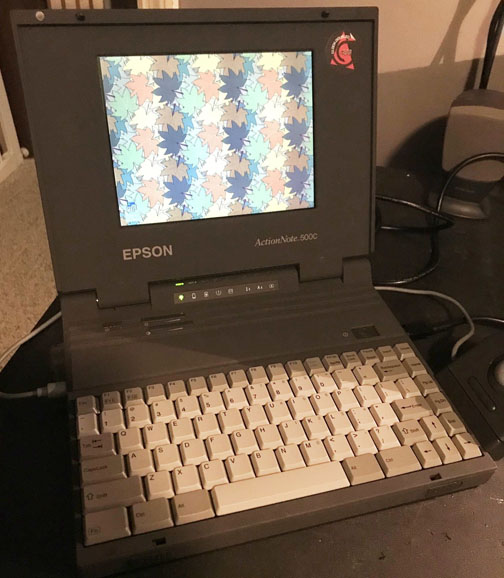
Epson ActionNote 500C
These laptops are fairly utilitarian from the looks, and have no internal pointing devices. They were supplied with a Logitech TrackMan trackball, which plugged in via PS/2 and attached to the right side case housing over the floppy drive. Just a no-frills lower-end 486 laptop.
This boringness appears to have helped it in the long run, as these can be very reliable machines with a bit of proper maintenance. See the page linked in the nav bar for more info.
These laptops were manufactured by ASE Technologies. It is unclear whether these were designed by ASE, or if they only manufactured them.
Specifications
| Spec | Details |
|---|---|
| CPU | CPU Type: Soldered QFP 486SLC2 @50MHz |
| Chipset | Unknown |
| RAM | Type: Proprietary Standard: 4MB Maximum: 8MB |
| Storage | 2.5" IDE Requires Adapter: Sort of, has a cable inside Standard: Unknown |
| Display Options | 8.4" Passive Matrix Color @640x480 |
| Graphics Chipset | Cirrus Logic VRAM: 512KB |
| Audio | PC Speaker |
| Main Battery | Unknown |
| CMOS Battery | Dallas Integrated RTC/Battery |
| Power Supply | Kycon KPPX-4P Connector |
| Media Drives | 3.5" 1.44MB Floppy Drive |
| PC Cards | Unknown |
| Networking | Unknown |
| Other I/O | Unknown |
| BIOS | AMI |
| Pointing Device | None |
Common Faults & Maintenance
These laptops will need some work to get running, but once said work is done, they seem to fair pretty well for their age reliability-wise.
LCD Caps
The LCDs in the 500C use SMD electrolytic caps which fail and leak with age. Bad capacitors will cause the display to display artifacts far worse than what is expected normally for a passive matrix display. When the caps go bad enough, the display will stop displaying properly at all. With enough time and corrosion, the cap leakage can render a display unfixable, in a case where the leaked electrolyte corrodes the ribbons going from the LCD's PCBs to the glass panel itself. Replacing these capacitors should be step 1 for any ActionNote 500C owner.

Image of a 500C's LCD with failing original capacitors. Note the extreme artifacting.
Image provided by compaqportableplus on the VCF forums.
Dallas RTC Chip/Battery
These ActionNotes use the infamous Dallas chip for RTC/CMOS Battery functions. This chip is an integrated real time clock/battery solution that was very common on desktop boards of the time, and these laptops have them as well. This chip is a small black module that has an integrated and non-replaceable battery inside. This battery thankfully doesn't leak, but when it goes dead, you can't replace it. What's worse, many computers that used this chip needed the battery to be good for the computer to boot properly. These ActionNote laptops do in fact need the battery to be good to boot properly. I currently do not have a guide up on this (you can easily look one up though), but it is possible to hack a new battery onto the chip. This involves grinding down the chip until the battery contacts inside can be exposed and disconnected. You'd then solder wires to them that go to an external battery holder. Again, I'd recommend looking up a guide on doing this.
Other Notes
Beyond these two fixable faults, these laptops are reported to be quite reliable. You may be wondering about brittle plastic and hinge issues. I have not handled these myself, but compaqportableplus, who originally documented these laptops, says that the plastic quality on these is actually pretty good and that hinge failures don't seem to be an issue.
Most of these seemed to ship with an uncommon hard drive made by Areal Technology. These seem to have pretty decent reliability for their age.
The main battery is either going to be NiCad or NiMH, both of which are very prone to leaking. Keep them out during storage if they haven't leaked already.
The finish on the plastics seems to be a bit easy to scratch.
As noted in the specs list, the RAM for these systems is proprietary. If you need more than what a unit you're buying comes with (4MB soldered), don't expect to be able to find any upgrades that don't come from another complete unit.
Thee 500C uses a proprietary 4-pin PSU connector, similar or maybe even the same style as the original 486 WinBooks. This would normally make sourcing a supply difficult, however, there is currently a seller on eBay who has over 2 dozen of them in stock. For the time being, they aren't hard to find. If you see this page hasn't been updated in years though, things may be different.
Gallery
Click on any image below to view the full-size version of it.
All images on this page were provided by compaqportableplus on the VCF forums. Thank you!

ActionNote 500C, powered on.
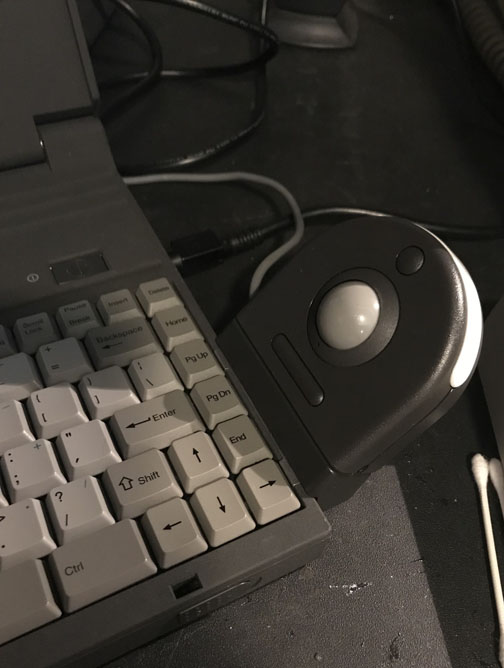
Image of the Logitech Trackman trackball, which shipped with the 500C. It clips on the side of the unit, but uses a PS/2 cable, not a dedicated connector like certain other laptops did.
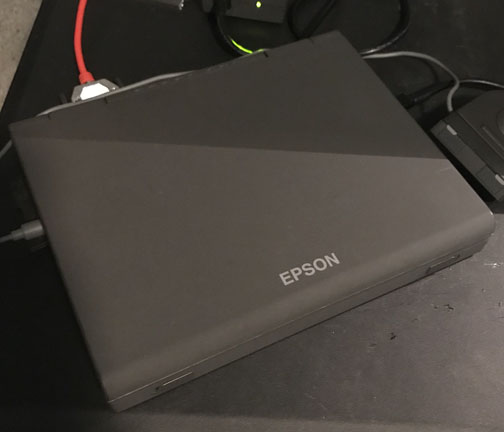
Top of the unit.
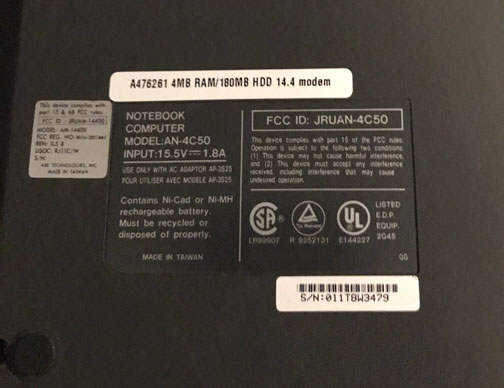
Bottom label with FCC ID (leads to ASE), and ASE's model number for this unit, which was AN-4C50.
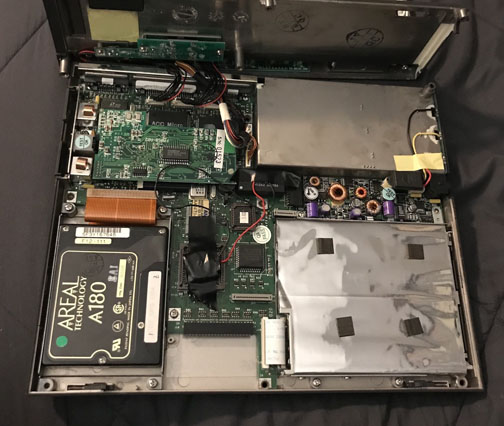
Internal view of the 500C. Notice the rare AREAL hard drive and a modded Dallas RTC chip.
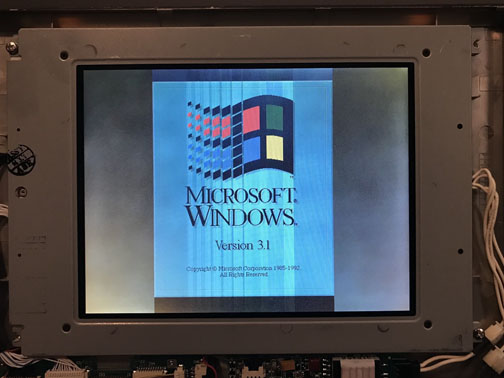
500C LCD showing the Windows 3.1 boot screen. Notice the severe artifacting, indicative of capacitor failure.

Another image of the 500C's LCD showing cap failure, this time while running ScanDisk.
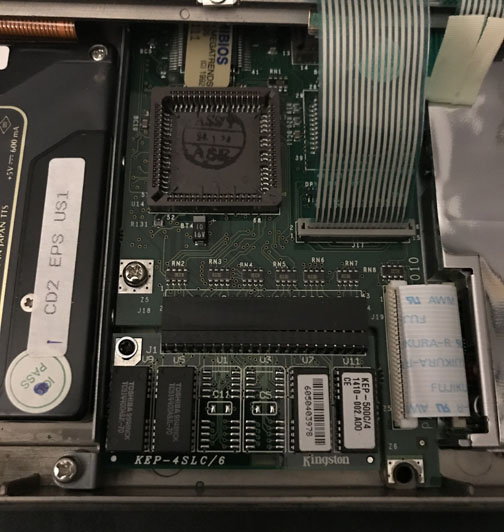
Rare memory upgrade module, shown installed.
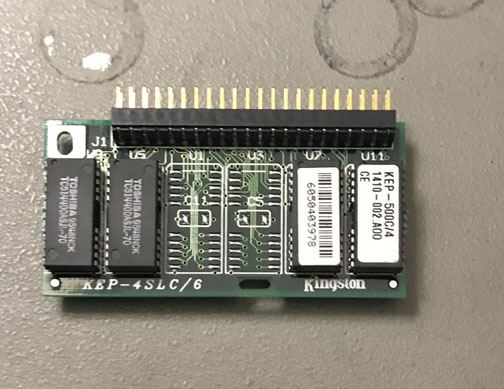
Memory module again, this time outside the unit. It probably wouldn't be too difficult to trace the pinout and create new ones, now that I think of it.
Print Ads
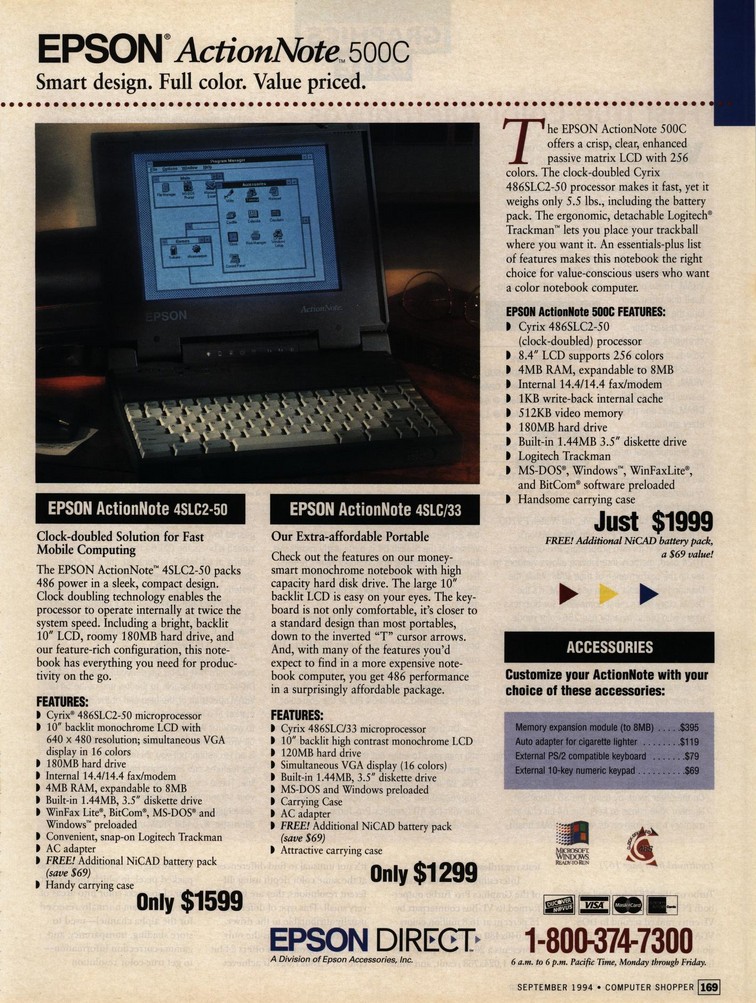
Page last updated (MM/DD/YYYY): 01/01/2025
Update Reason: added print ad
Back-Navigation
Home < Laptop Portal < Epson < ActionNote 500C